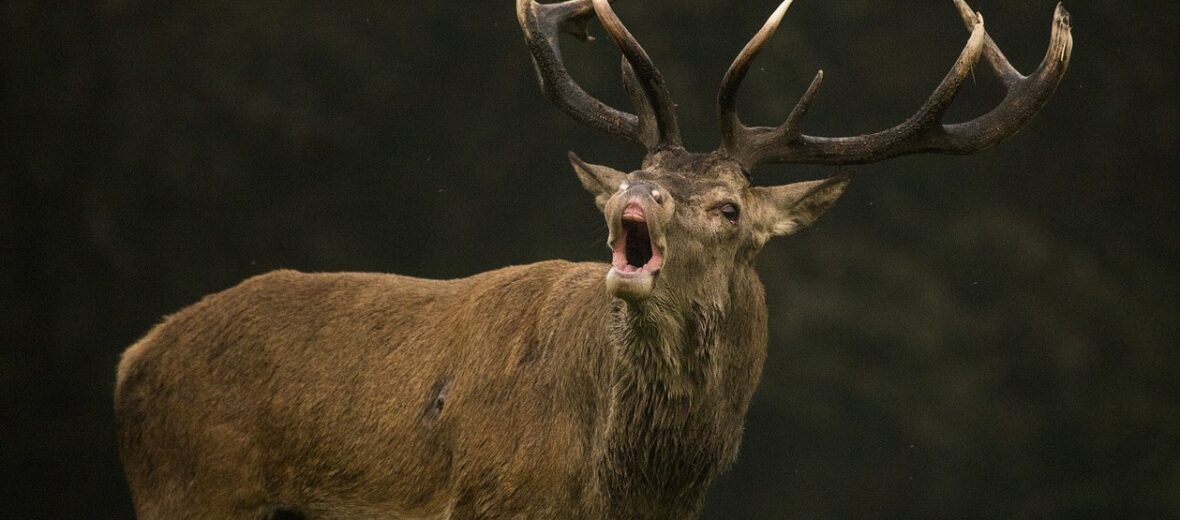
The red deer is most notable for their beautiful branching antler display. They can be found in Europe, the Caucasus Mountains region, Asia Minor, areas of western Asia, Iran, central Asia, and even Africa. These deer have also been introduced to United States, Canada, Australia, New Zealand, Peru, Uruguay, Chile, and Argentina. Red deer prefer open woodlands, clear cuts, coniferous swamps, aspen-hardwood forests, and coniferous-hardwood forests. Even though they combat habitat loss, hunting, climate change, and disease, they are still listed as Least Concern by the IUCN and their populations are increasing.
First the Stats…
Scientific name: Cervus elaphus
Weight: Up to 440 lbs.
Length: Up to 7 feet
Height: Up to 4 feet
Lifespan: Up to 20 years
Now on to the Facts!
1.) A male is called a hart or a stag, and females are called a hind. Newborns are called fawns.
2.) Red deer are classified as ruminants (possessing a 4-chambered stomach).
3.) These critters are social, during most of the year. They can be found in herds of up to 400 individuals.
4.) The red deer are preyed on by bears, gray wolves, mountain lions, and humans.
5.) Herds are run by a matriarch (dominant female). What other critters are run by a matriarch? That’s right, elephants.
But wait, there’s more on the red deer!
6.) They are found at elevations from sea level all the way up to 10,000+ feet.
7.) Red deer are among the world’s largest known deer species. Taking 4th, after the moose (#1), the elk (#2), and the sambar deer (#3).
Did you know…?
A group of red deer is called a herd, a mob, or a gang.
8.) As is the case in most all deer, only the stags have antlers.
9.) Red deer are browsers, feasting on grasses, forbs, sedges, woody growth (like wintergreen, cedar, sumac, jack pine, eastern hemlock, basswood, staghorn, & red maple). These deer are especially fond of clover, dandelions, hawkweed, aster, violets, and occasionally mushrooms.
10.) Like all ruminants, they will spend their days chewing their cud. This is a process where they will regurgitate their food and chew it again, to aid in digestion. Yummy! What is another critter that does this? That’s right. A cow.
But wait, there’s still more on the red deer!
11.) Males are polygynous (1 male mates with multiple females).
12.) In September – early October, males will lose the velvet on their antlers and begin the rut to compete for a harem of females.
Did you know…?
Red deer have been widely depicted in ancient cave drawings found throughout Europe. Some instances of this artwork dates back as early as 40,000 years ago; during the Upper Paleolithic Era.
13.) Harems typically consist of a single male (bull) and up to 6 females.
14.) Females will birth a single fawn after up to a 262 day gestation (pregnancy).
15.) They are crepuscular (active during dawn and dusk) and nocturnal (active at night).
Now a Short Red Deer Video!
Also, check out the Critter Science YouTube channel. Videos added frequently!
Want to suggest a critter for me to write about? Let me know here.



